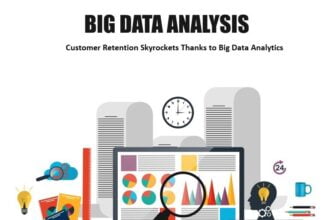Analytics is a hot topic these days, with more and more companies adopting analytics to improve their competitiveness, target customers more effectively, detect more fraud and much more. Increasingly those adopting analytics think about data mining and predictive analytics not just reporting and dashboards. The kind of analytics discussed in Competing on Analytics, Super Crunchers or Analytics at Work are gaining ground.
Yet, despite this rapid adoption of analytics, only perhaps 1 in 10 of the companies that are using advanced analytics have really systematized their use of analytics. The vast majority are still using analytics opportunistically, adopting it for some projects when it seems appropriate rather than always thinking about how analytics could be part of the solution to a new problem. Companies like GE Rail, who won an award at the recent SAS Global Forum for their widespread and systematic use of analytics are the exception.
When you drill into this you find that this 10% are run by CEOs who are or used to be “quants” (mathematicians, statisticians, econometricians) or credit risk managers, perhaps engineers. People with a tendency to accept the need for …
Analytics is a hot topic these days, with more and more companies adopting analytics to improve their competitiveness, target customers more effectively, detect more fraud and much more. Increasingly those adopting analytics think about data mining and predictive analytics not just reporting and dashboards. The kind of analytics discussed in Competing on Analytics, Super Crunchers or Analytics at Work are gaining ground.
Yet, despite this rapid adoption of analytics, only perhaps 1 in 10 of the companies that are using advanced analytics have really systematized their use of analytics. The vast majority are still using analytics opportunistically, adopting it for some projects when it seems appropriate rather than always thinking about how analytics could be part of the solution to a new problem. Companies like GE Rail, who won an award at the recent SAS Global Forum for their widespread and systematic use of analytics are the exception.
When you drill into this you find that this 10% are run by CEOs who are or used to be “quants” (mathematicians, statisticians, econometricians) or credit risk managers, perhaps engineers. People with a tendency to accept the need for experimentation and an understanding of mathematical concepts. With this kind of CEO the adoption of analytics as a core element of a corporate strategy often goes well – support from the top providing the energy and investment needed.
But what about the other 90%? Business leaders with experience in sales or marketing but without a technical background. People who put relationships and human factors first? They’re typically not so willing to support analytics, not so willing to defer decision making authority to the data or the system.
And what about IT? CIOs care about analytics more and more – seeing it as a way to turn the data they have to value creation. The consulting companies with CIO relationships like IBM with its Business Analytics and Optimization service line and Accenture with its recently announced SAS partnership see analytics as the next big thing. This is all to the good but represents a challenge also as an IT-centric, horizontal approach is the wrong way to go about adopting analytics.
The challenge for analytics – both the companies that sell advanced analytics like SAS and IBM/SPSS and those of us who believe analytics are indeed the next big thing – is to get analytics embedded into the other 90%. No-one, not even me, is sure how to do this but a few things are becoming clear:
- Focus on vertical solutions – domain specific analytics.
It is a lot easier to get someone to adopt and use analytics when they are described in business terms and focused on a problem that they have and understand. - Start with one decision or a couple of closely related decisions.
Even those companies with broad analytic usage started with a focused effort around a single decision or decision area. Don’t let IT start an analytic platform effort until you have demonstrated success with analytics and begin every analytic project with the decision in mind. - Get business, IT and analytics folks on the same page.
The way to get analytics adopted is to get the IT folks to understand what analytics does to the way they build information systems, the business folks to understand how analytics can change their business, and the analytics folks to understand how their analytic models are actually going to be used. - Be patient.
Even in companies with analytic leaders it takes time to broaden the portfolio of analytic adoption. Have a vision, have a plan, expect it to take a while. - Move closer and closer to real-time.
Some of the most exciting opportunities for analytics lie in the use of analytic models in real-time systems. Systems that learn as they interact with customers, that detect fraud before it enters the system, that allow customers to get immediate answers to complex questions. Focusing on these opportunities, not just the back office ones, is essential for broad analytic adoption.
In my last SmartDataCollective exclusive post I laid out a six stage approach to adopting powerful analytic techniques. Now more than ever companies and organizations need to think how they are going to adopt analytics and when.
I was a guest of SAS at the SAS Global Forum recently and I got a chance to sit down and talk
with Dr Jim Goodnight, CEO of SAS. That conversation, along with others,
prompted these thoughts. The SAS Global Forum Executive Conference had some good sessions and I blogged about several:








